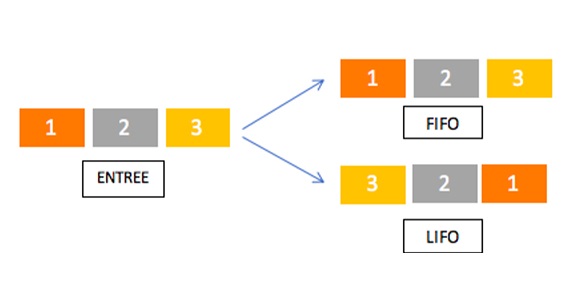
One of the important issues in warehousing is the classification of warehouse goods and the basic layout of the warehouse. In fact, your company’s warehouse layout will determine what kind of shelves you get and how you install the shelves. In the following, we will check the types of warehouse arrangement and the classification of goods in the warehouse.
Why is the arrangement of goods in the warehouse important?
Warehouse is one of the most important parts in companies, workshops and large stores. In the warehouse, manufactured goods, purchased goods and raw materials are stored. Normally, warehouses contain goods with or without shelves. But in basic storage, it is necessary to observe the principles of warehouse arrangement.
The zoning of the warehouse and the classification of goods in the warehouse make it easier to access the goods and reduce the time of arrival and departure of goods. The standard arrangement of goods in the warehouse prevents items from falling due to incorrect arrangement. Also, the correct placement of the goods makes the items with expiration dates to be removed from the shelf on time. The basic layout of the warehouse also helps to improve warehouse management processes and increase the efficiency and effectiveness of warehouse personnel.
There is no principled and single method for arranging the warehouse. Rather, each company chooses the best arrangement method based on the type of goods, the size of the warehouse and the needs of the company. The classification of goods should be flexible and adapt to the increase in the number of goods or the decrease of goods.

What are the methods of arranging goods in the warehouse?
Dispersion of goods in the warehouse increases the time to find a product by 60%. For this reason, a concept called warehouse division has been created. Warehouse division can be based on various factors:
- Sometimes the type of product needs a special arrangement. Among these goods, we can mention flammable materials, perishable goods, bulk materials, etc.
- The amount of demand for goods can determine the type of warehouse arrangement. If you have a high-demand product, it is better to place it near the warehouse exit.
- The similarity of goods to each other is a good criterion for classification. This means that you can place similar products next to each other.
- Seasonal goods are another criteria for arrangement in warehouses.
- The type of shelving, the size of the goods, the geometric shape of the goods, the structure of the shelves and the distance of the shelves from each other are important criteria for the layout of the warehouse.
- The way to categorize the goods in the warehouse can be based on the direct opinion of the managers and officials of the company.
In general, depending on the conditions of the goods and the conditions of the warehouse, the type of arrangement will be different. In the following, we examine the most important layout methods.
Arrangement based on expiration date of products
Some products have a specific expiration date. Among these goods, we can mention cosmetics, medicine, food, etc. In these cases, the goods are arranged in the warehouse according to their expiration dates; So that the products with more expiration dates will be placed at the end of the shelf.

arrangement based on the order of goods exit (LIFO and FIFO methods)
In the LIFO (Last-In-First-Out) method, the last goods that entered the warehouse are selected as the first goods for distribution and shipping orders. This method is suitable for goods that have a close expiration date and will soon become obsolete, and in the conditions of price inflation, it can benefit the business.
In the FIFO or (First-In-First-Out) method, the first goods that enter the warehouse are selected as the first goods for distribution and shipping orders. The FIFO method helps prevent wastage of goods and provides more accurate information about costs in the market.

Arrangement based on product type
Some companies or stores have a wide variety of products. For example, the products that a hypermarket keeps are very diverse. In these cases, the arrangement of products is based on the type of product. Goods that belong to the same family or have the same use are placed in the same part of the warehouse. In this way, it will be easier to access the products of the same group.
Arrangement based on sales
Some products have a lot of sales. In this situation, we can place the best-selling products in the front part of the warehouse so that the time to access the product is reduced and the order delivery is faster. In fact, in this type of classification, the goods are sorted according to their sales, and the low-selling goods are stored at the end of the warehouse.
Arrangement by coding method
One of the good ways to store goods is to use the method of product coding. In mechanized warehousing systems and WMS or warehouse management system, a specific code is considered for each item to arrange the warehouse shelves, and the exact location of each item in the warehouse is determined based on the code. In this way, it is easier to access each product and warehouse management is done faster.
In the coding method, each product is assigned a unique code and label. In this case, the storekeeper must use the barcode reader to find the desired product. Coding systems used in warehouses are very diverse. Among these methods, the following can be mentioned:
- Alphabetical coding:
Placing products based on the first letter of the product name is one of the methods of product coding. This arrangement method is only applicable for warehouses with a limited number of goods.
- Numerical coding:
In this method, numbers are used to categorize goods. One of the methods of coding with numbers is decimal coding. In this method, decimal numbers are used, the left digit indicates the main group of goods and the right digit means the sub-group of goods.
- Combination of letters and numbers:
Nemonic method: for the arrangement of warehouse shelves where the number of products is limited, the first letters of the product name are used for coding.
- And…

Arrangement of warehouse based on related products
Some goods have many semantic connections with each other. In this situation, the goods that are sold together can be classified close to each other. For example, in the warehouse of home appliances, it is better to place tables and chairs that fit each other close together so that it is easier to access them at the same time.
Arrangement of seasonal goods
In this arrangement method, seasonal goods are placed on higher floors. The next way is to use the empty space between two shelves to arrange seasonal goods. When the selling season for these items arrives, items can be re-categorized based on expiration dates, bestsellers, or other relevant factors.
Arrangement based on the weight of the goods
The weight of goods is another effective factor in the grouping of goods in the warehouse. In this classification method, heavy goods are usually placed on the lower shelves and light goods are placed on the upper shelves. In this way, access to goods is improved and the possibility of falling is greatly reduced. The next point in the arrangement of goods is that bigger and heavier goods should be placed in a place where there is enough space to move them. There should be enough space in the shelf, aisle and way out of the warehouse to move these goods.
Arrangement based on goods transport machines and how the cars move
In large warehouses and industrial warehouses, forklifts are usually used to move goods. In the case of smaller warehouses, handling is done by human power. Therefore, in the arrangement of the warehouse, attention should be paid to the type of equipment available in the warehouse.
In warehouses where there are no elevators and forklifts, we cannot consider the number of shelf levels too much, and the items must be arranged in rows on the lower floors. If there is a forklift, the goods can be placed on higher floors and there is no limit in this field.
Also, the arrangement of the goods in the warehouse should be such that the goods can be easily transported in the corridors. The arrangement in the warehouse shelves should be such that the goods are not out of the frame and do not obstruct traffic.

The importance of software in the arrangement of goods in the warehouse
So far, we have explained the methods of classifying goods and arranging them in the warehouse. But for basic warehousing, in addition to proper layout, you will need warehousing software. Warehousing software and warehousing module in ERP system can provide quick access to warehouse goods. Warehousing module, which is one of the most important ERP modules, helps you to know the location of the goods in the warehouse, the number of stock and other information of the goods. This program helps to improve the warehousing processes, including the arrangement of goods in the warehouse.
Businesses can meet the needs of stakeholders inside and outside the organization in a timely manner with the help of proper layout and use of warehousing software. Reducing the sending of wrong goods, reducing the delivery time and better responding to suppliers and customers are the advantages of this software solution.
Tips for arranging goods in the warehouse
In the arrangement of the warehouse, you should pay attention to the principles of classification of goods in the warehouse. Pay attention to the following points in the classification:
- Before you start organizing your warehouse, define your goal and expected results.
- Make the arrangement in such a way that you get the most out of the warehouse space.
- The classification of the goods must be understandable to the warehouse staff so that they can place and load the goods in the best possible way.
- The arrangement of goods should be flexible and at the time of changes, it should be possible to update the arrangement.
- In the arrangement of goods, the safety factor is of great importance. Using directional signs helps save time, keep troops safe, and reduce mistakes.
- Buy strong and durable shelves. This avoids secondary costs and maximizes the security of goods and manpower.
- Product placement must be constantly monitored and optimized.
- Avoid stacking goods as much as possible. This eliminates the possibility of items falling and damaging the underlying goods.
- Use the right equipment to move goods and collect goods.
I like this post
Author:
Published date:
- March 4, 2024
- 09:16
Post views:
Comments:
- No Comments

